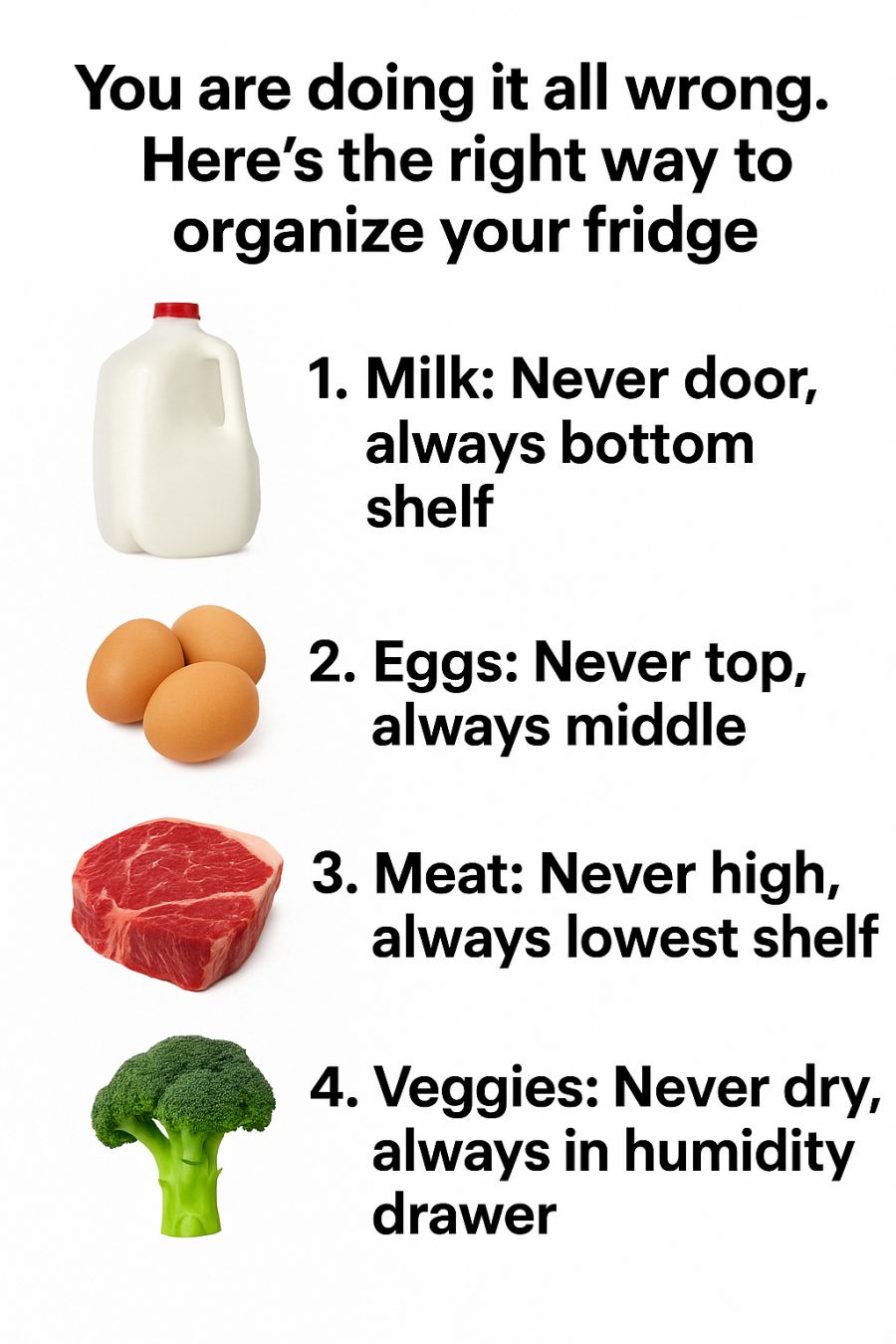
You are doing it all wrong. Here’s the right way to organize your fridge
4. Bottom Shelf: The Safest Place for Raw Meat
Raw meat, poultry, and fish should always be stored on the bottom shelf of the fridge. This is the coldest part of the fridge and helps prevent the growth of harmful bacteria. Additionally, storing raw meats on the bottom shelf minimizes the risk of their juices dripping onto other foods, which could cause cross-contamination.
Always keep raw meats in a sealed container or on a tray to catch any leaks, and ensure they are used or frozen within a few days to maintain freshness and safety.
5. Door Storage: Only for Condiments and Juices
The door is the warmest part of the fridge and experiences the most temperature fluctuations due to frequent opening and closing. As such, it’s best reserved for condiments, juices, and other items that are not highly perishable. These items generally have preservatives that make them less sensitive to temperature changes.
Avoid storing eggs, milk, and other dairy products in the door, as they require a more stable and cooler environment to maintain their freshness.
6. Crisper Drawers: How to Use Humidity Settings for Veggies
Crisper drawers are designed to provide a controlled environment for fruits and vegetables, with adjustable humidity settings to suit different types of produce. Vegetables generally prefer a high-humidity environment, which helps prevent wilting by keeping moisture in.